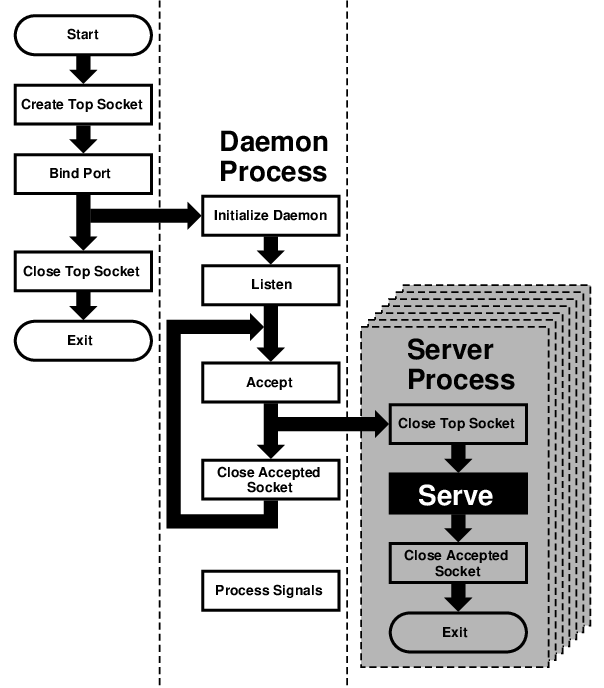Unlike a sequential server, a concurrent server has to be able to serve more than one client at a time. For example, a chat server may be serving a specific client for hours—it cannot wait till it stops serving a client before it serves the next one.
This requires a significant change in our flowchart:

We moved the serve from the
daemon process to its own server
process. However, because each child process
inherits all open files (and a socket is treated just like a
file), the new process inherits not only the
“accepted handle,” i.e., the
socket returned by the accept call, but
also the top socket, i.e., the one opened
by the top process right at the beginning.
However, the server process does not
need this socket and should close it
immediately. Similarly, the daemon process
no longer needs the accepted socket, and
not only should, but must
close it—otherwise, it will run out
of available file descriptors sooner or
later.
After the server process is done
serving, it should close the accepted
socket. Instead of returning to
accept, it now exits.
Under UNIX®, a process does not really
exit. Instead, it
returns to its parent. Typically, a parent
process waits for its child process, and
obtains a return value. However, our daemon
process cannot simply stop and wait. That would
defeat the whole purpose of creating additional processes. But
if it never does wait, its children will
become zombies—no longer functional
but still roaming around.
For that reason, the daemon process needs to set signal handlers in its initialize daemon phase. At least a SIGCHLD signal has to be processed, so the daemon can remove the zombie return values from the system and release the system resources they are taking up.
That is why our flowchart now contains a process signals box, which is not connected to any other box. By the way, many servers also process SIGHUP, and typically interpret as the signal from the superuser that they should reread their configuration files. This allows us to change settings without having to kill and restart these servers.